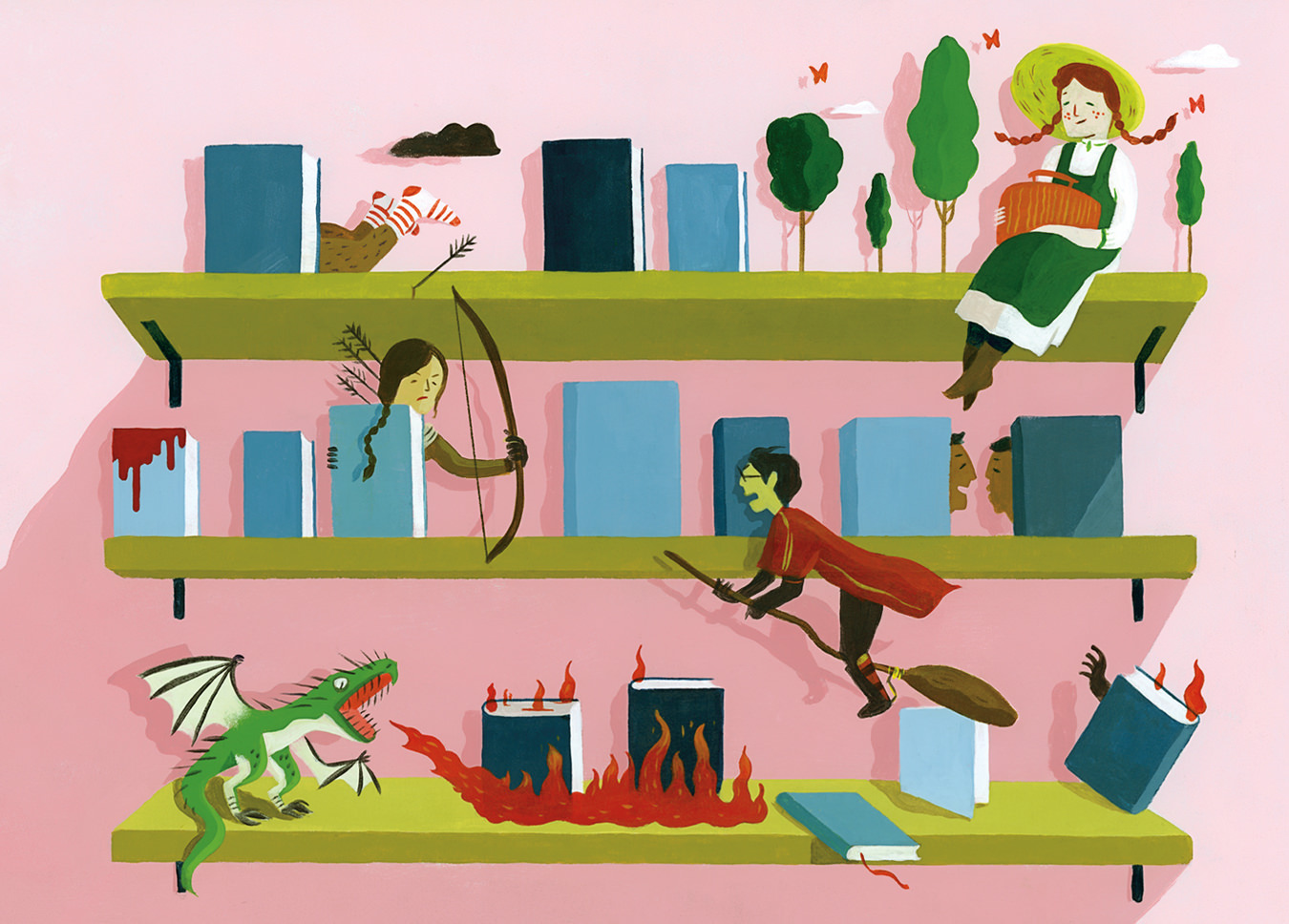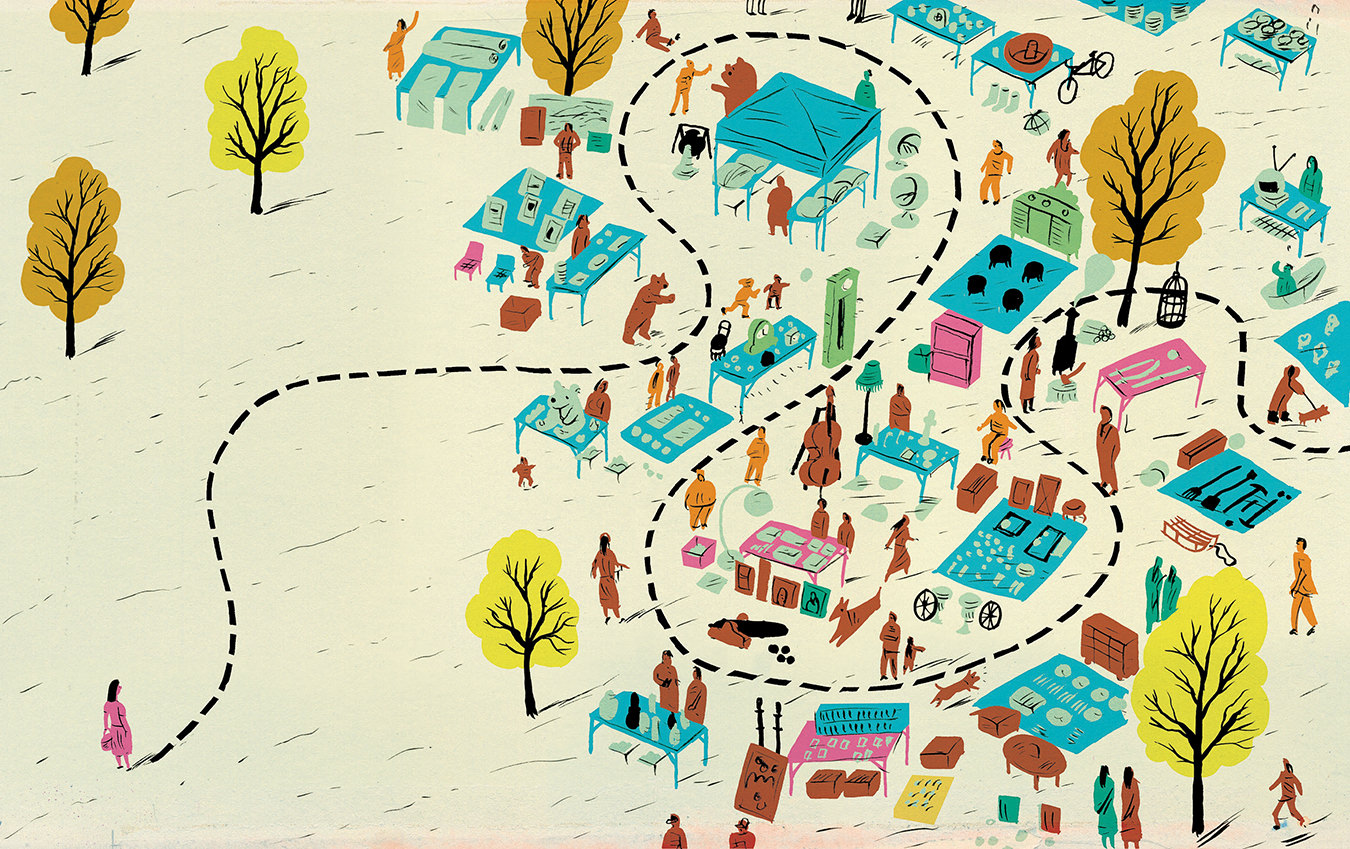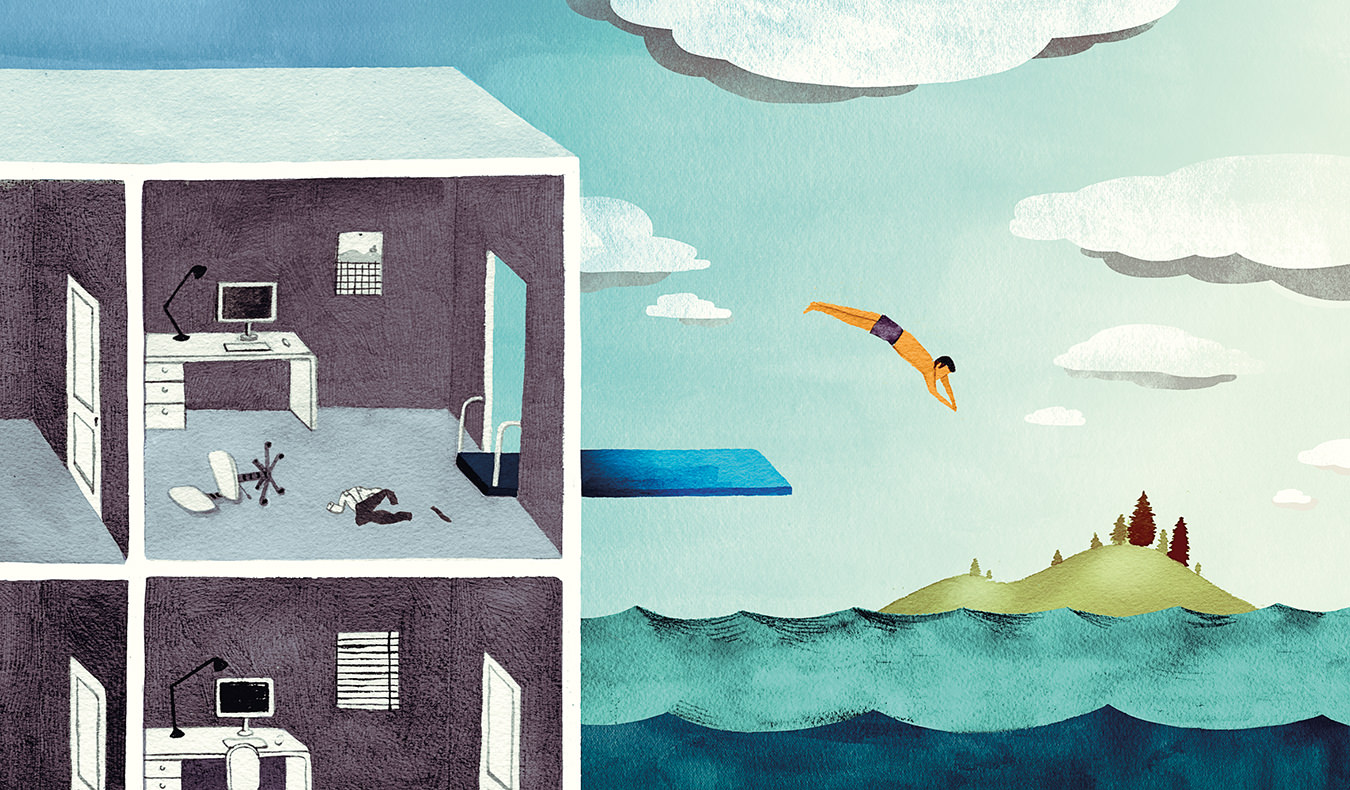Coming of Age
Montgomery's Green Gables.

It’s the most innocent doorstep in Canada. A line of senior citizens—eager as children at Disneyland—peer across manicured lawns and hold up shaky iPads to photograph the sweet and sunny house from Anne of Green Gables. Here in Cavendish, on the quiet northern shore of Prince Edward Island, the insistence on innocence is palpable; one aged dandy sips from his bottle of raspberry cordial, eyebrows permanently perked with studied insouciance.
My boyfriend and I decide to wander first through the “haunted woods”, toward author Lucy Maud Montgomery’s actual homestead. In sharp contrast to the pristine piece of architectural fiction that is Green Gables, Montgomery’s childhood home is a mossy ruin. Today there’s just a cordoned-off cellar pit, a hole in the ground.
We stand about and stare at the rust-coloured fields of farmland, the wind-whipped branches of birch. We read plaques emblazoned with euphoric Montgomery quotations about the surrounding nature, and then we look up at bushes and dirt.
The author herself left this tiny corner of P.E.I. when she married at 36, but her family members remain—custodians to the phenomenon that is Anne. Over a century later, a third of a million pilgrims arrive at Green Gables every year.
Why does Anne endure when there are such sexier options today? How are young adult readers drawn in by a girl whose main ambition in life is to wear “puffed sleeves” and find a “bosom friend” when we could be rooting for Katniss Everdeen as she flees a band of crazed, murderous hunks? While Anne’s major challenge is keeping her loquacious mouth shut, Katniss and Harry are tasked with saving the world, while Bella navigates life alongside vampires.
I think it’s precisely because Anne’s world is so circumscribed that she endures. She may be an ambitious little girl (she must win the spelling bee), but her story is less about a raging god complex and more about the small yearnings that make up the majority of everyone’s meek, ignoble life.
Anne’s style of innocent yearning, though, is very out of place on contemporary bookshelves. And that speaks to a far larger shift in the way we view childhood itself. For a few centuries—after the printing press and before the Internet—we thought of childhood as a time when people were slowly but steadily exposed to a list of secrets about the adult world; this mercurial “coming of age” culminated in sexual knowledge (oh, Gilbert Blythe, we loved you so). The printing press, and the literacy it required, created obstacles to all that adult knowledge. As the media scholar Neil Postman put it: “One must qualify for the deeper mysteries of the printed page by submitting oneself to the rigors of a scholastic education.” But the Internet dissolved that barrier to secret adult information; today, porn is more accessible than a walk in the woods.
Perhaps the loss of those secrets, and the intellectual freedom that the Internet provides, has had the unintended effect of shifting what “children’s literature” in fact means. With no secrets, there is less division between what an adult knows and what a child knows. YA fiction becomes more adult, and adults certainly have taken to reading YA fiction. Authors writing novels marketed toward the young now feel compelled to provide their readers with “mature content.” To do otherwise would risk insulting the child’s intelligence.
The winner of the Governor General’s Literary Award for Children’s Literature last fall was Vancouver’s Raziel Reid, whose dark and risqué book is called When Everything Feels Like the Movies. Many middle-aged finger-waggers were appalled by its frank portrayal of sexual desire and the brutal depiction of a queer suburban youth’s struggles. During Reid’s acceptance speech at Rideau Hall, I watched him take on the persona of his cocky young narrator and, from the podium, make an overt pass at the Governor General himself (His Excellency smiled indulgently). Certainly there was no meaningful “secret” made of adulthood there.
And yet. We haven’t entirely abandoned that more circumscribed portrait of childhood. Or, rather, grown-ups haven’t given up on the fantasy. My boyfriend and I wandered back through the haunted woods and, finding Green Gables free from crowds at last, made our way through its hallowed halls. There was Marilla’s starched room and Matthew’s; there was Anne’s tiny bed, too, and the shattered slate she’d broken over Gilbert Blythe’s head when they first met.
Turning to the Parks Canada guides, we asked, like children, “Were the gables really green before?” No, they weren’t; they were painted for marketing purposes. We frowned a little at the revelation. Then we made our way down “Lover’s Lane” and did our best to rhapsodize about a brook.




